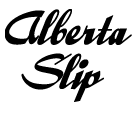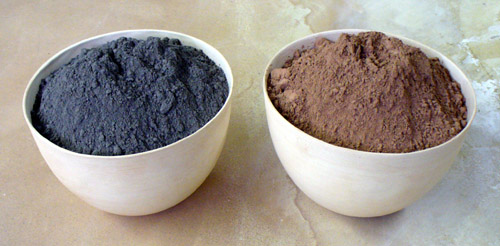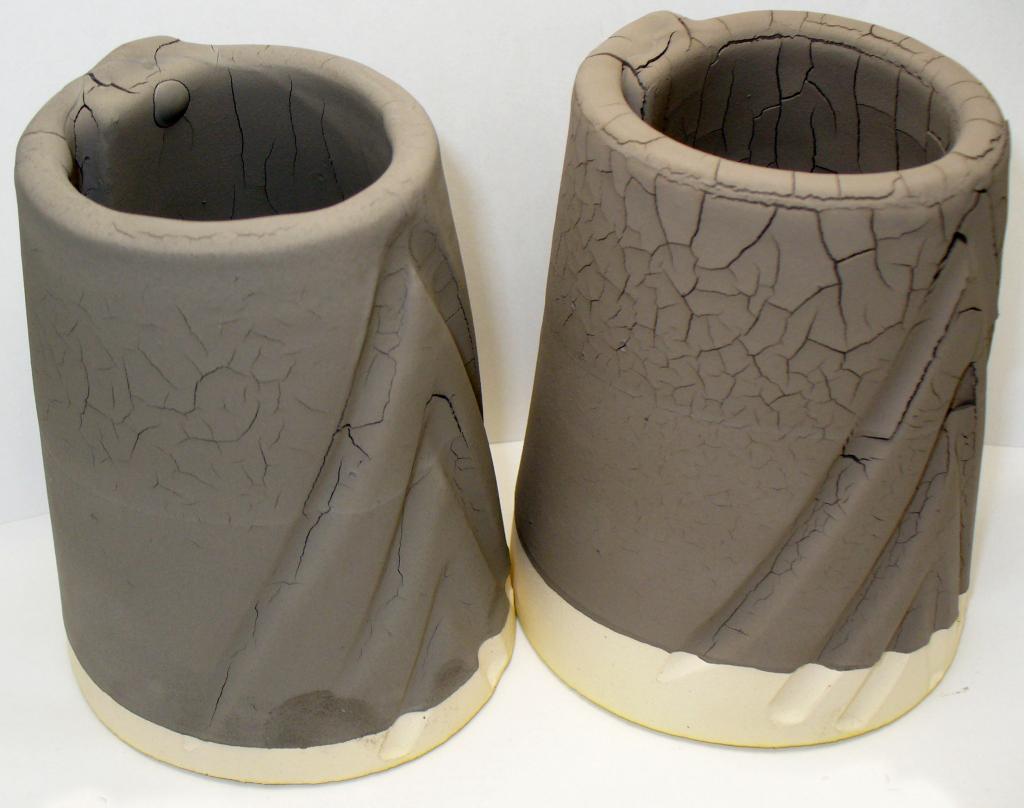

Calcining Alberta Slip

The Alberta Slip powder on the right has been calcined. You may need to do this for part of what you use.

Alberta Slip is a clay, if used raw in high percentages it can crack during drying so calcination may be needed.
Alberta slip is much more plastic than Albany was (and therefore has a higher drying shrinkage and dry strength). This affords the opportunity of mixing raw and calcined (roasted) material in the needed proportion to adjust the drying shrinkage of your glaze.
If an Alberta Slip glaze cracks when drying then part of the material needs to be roasted (to cut shrinkage). While this sounds like an extra hassle, the control of slurry properties make it worth while.
We roast it to 1000F, high enough to destroy the plasticity (firing higher than that can calcine it, sintering particles together and creating grit). Use a firing rate and hold-time-at-1000F appropriate for the wall thickness and size of your bisque vessels (e.g. 500F/hr and 30 minutes for thin walled small vessels, slower and longer hold for large ones). Watch for black powder remaining in the center as an indication of insufficient roasting.
Adjusting percentages: This roasted material has an LOI of about 3% (vs. 9% for the raw powder). This difference can be ignored in most cases. But if you want to be more precise, use 3% less of the roasted powder (multiply the amount by 0.97). For example, suppose you need 1000 grams of a 50:50 raw:cacline Alberta Slip mix for a glaze recipe. Use 500 raw and 500*.97=485 roast. Then watch how the slurry performs and adjust the proportions if needed (more roast if the glaze cracks on drying or more raw if it is drying too powdery or not bonding well).
Alberta Slip is a product of Plainsman Clays and is mined in North America's premier "Clay Country" (near Ravenscrag, Saskatchewan, Canada and also in Montana, USA)